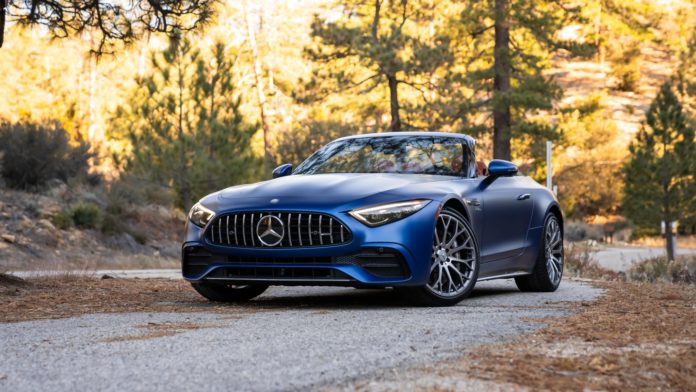As the Mercedes-AMG SL entered its seventh generation, simultaneously dropping the famed Benz moniker in favor of Affalterback’s iconic three letters, it did so with a new architecture, engine, and aesthetic unique to the performance brand that created it. The car that started life as a full-blown race car in the mid-50s but gradually morphed into a cushy GT by the 90s had experienced a spiritual return to form of sorts. And while the new SL is still a large and hefty machine, it now has sportier intentions.
This character shift may have made the R232 an all-around more enjoyable and versatile SL than the one it replaced; it did so strictly at a higher price. The SL 55, which up until last year was the least expensive variant, carried a $142,450 base figure, while the range-topping SL 63 kicks that number up to $183,000. With options, the 63 I reviewed almost exactly a year ago came in at $215,585.
The obvious solution is a less expensive third model, which arrived last year in the form of the Mercedes-AMG SL 43, a car that starts at $111,050, including a $1,150 destination fee. That’s $40,000 less than the 55 and a whopping $70,000 under the 63. There are trade-offs, though. You won’t find AMG’s famed 4.0-liter V8 under its hood; instead, a turbo-four takes up its spot. The pricier SL’s standard all-wheel-drive system is gone, as are its torque-vectoring capabilities and active anti-roll stabilization system.
The SL’s upward price push leaves a sizable gap in the lineup, but is the simpler, four-cylinder-powered SL 43 the right car to fill it? Can an SL without all the extra goodies still be good?
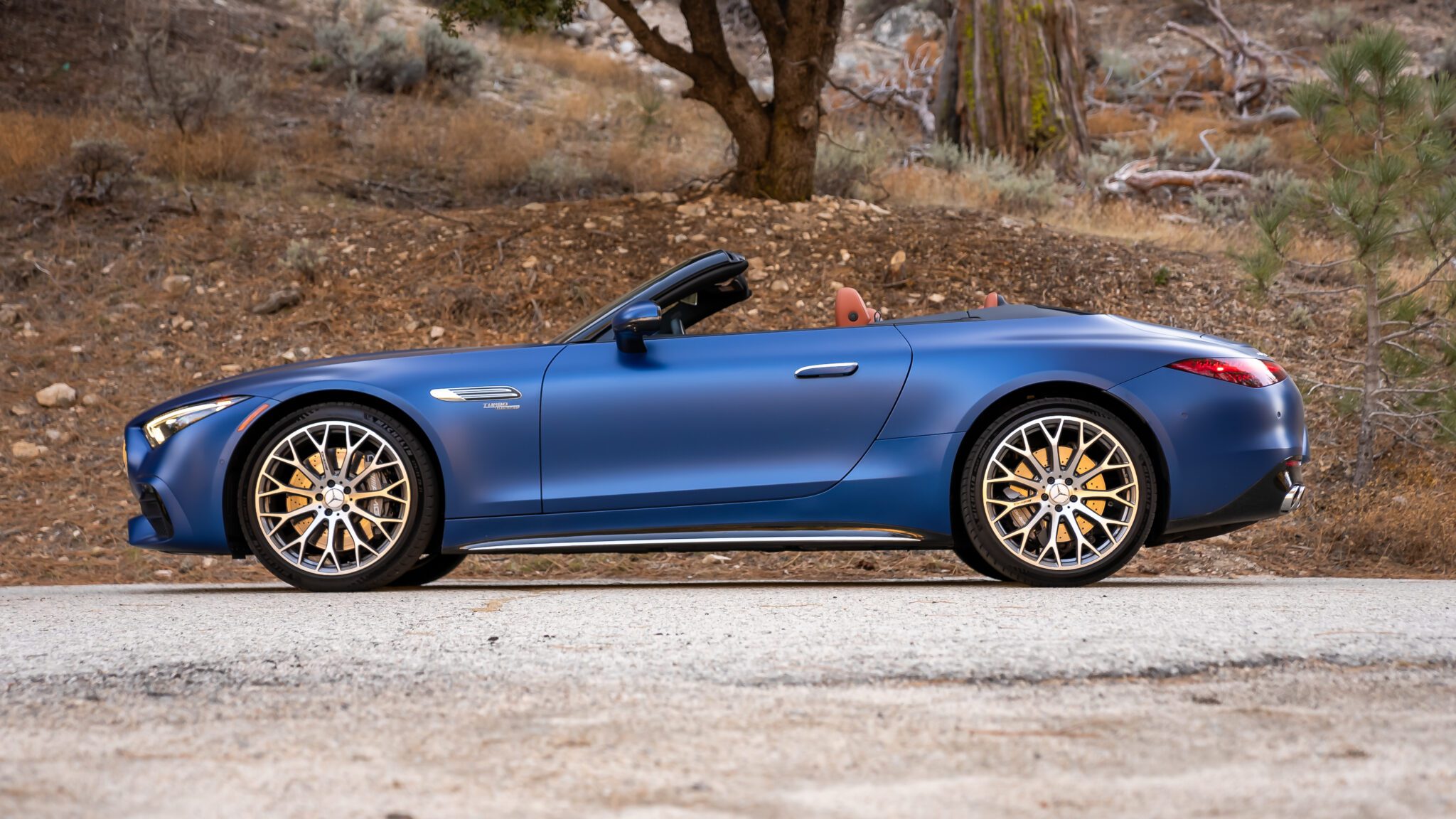
Since SL 43’s engine seems to dominate much of the conversation that surrounds it, let’s start there. It’s a 2.0-liter turbocharged inline-four, similar to what powers AMG’s line of 45 models. However, the version found in the SL differentiates itself by introducing an electric turbocharger into the mix. Borrowed from the carmaker’s F1 program, it houses a tiny 1.6-inch electric motor between its turbine and compressor wheels, allowing it to spool up more quickly, thus improving throttle response.
All in all, the “entry-level” SL generates 375 horsepower and 354 pound-feet. That may not seem like much in a two-door that weighs dangerously close to 4,000 pounds, but this inline-four is a buzzing, feisty little overachiever. Aided by a quick-shifting multi-clutch nine-speed automatic, the 43 confidently puts all its power down, even if it only goes to its rear wheels. It may be 94 hp shy of the 55’s 469 hp output, but AMG’s smallest engine is so reactive, always anxious to hit you with tons of power, that I’d be willing to bet that most drivers wouldn’t notice the difference.
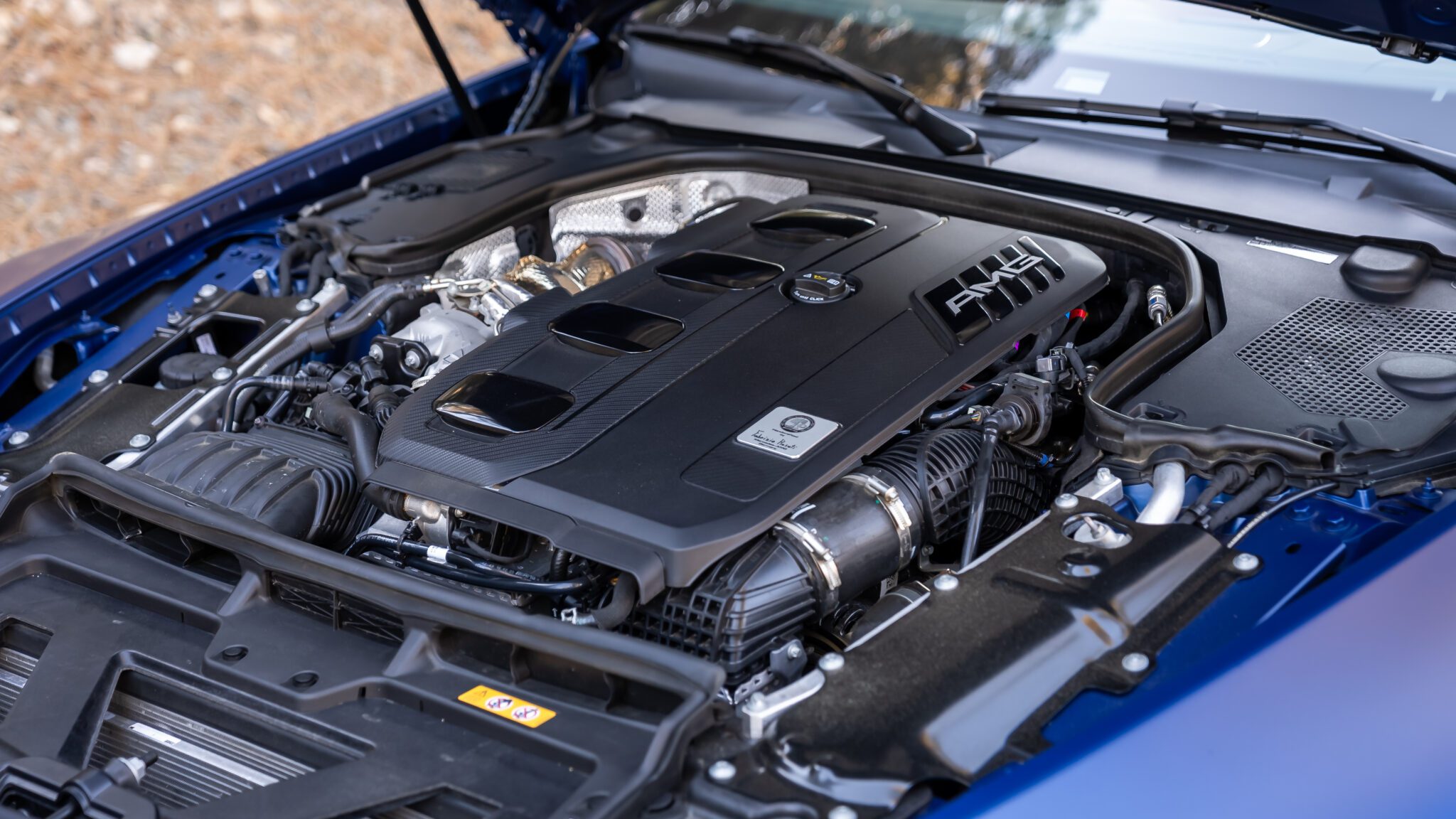
Although the sound emanating from its quad round exhaust tips isn’t as intoxicating as the V8-powered SL’s barbaric note, it’s still plenty rowdy. It’s a loud, buzzing, surprisingly low-toned growl, which, coupled with plenty of turbo noises, adds a fair bit of drama to the 43’s driving experience.
There is more good news once you encounter a deserted, twisty back road. Although the SL 43 isn’t leaps and bounds lighter than its pricier counterparts, it retains much of the agility and balance that makes its siblings special. Its front end, for example, isn’t just tremendously grippy; it’s very eager to change direction. Aided by a quick steering system, the SL dives confidently into even tight bends with little body roll. What’s more impressive, however, is that it manages to drive as well without any active suspension bits, relying on a fairly standard combo of traditional shocks and steel springs.
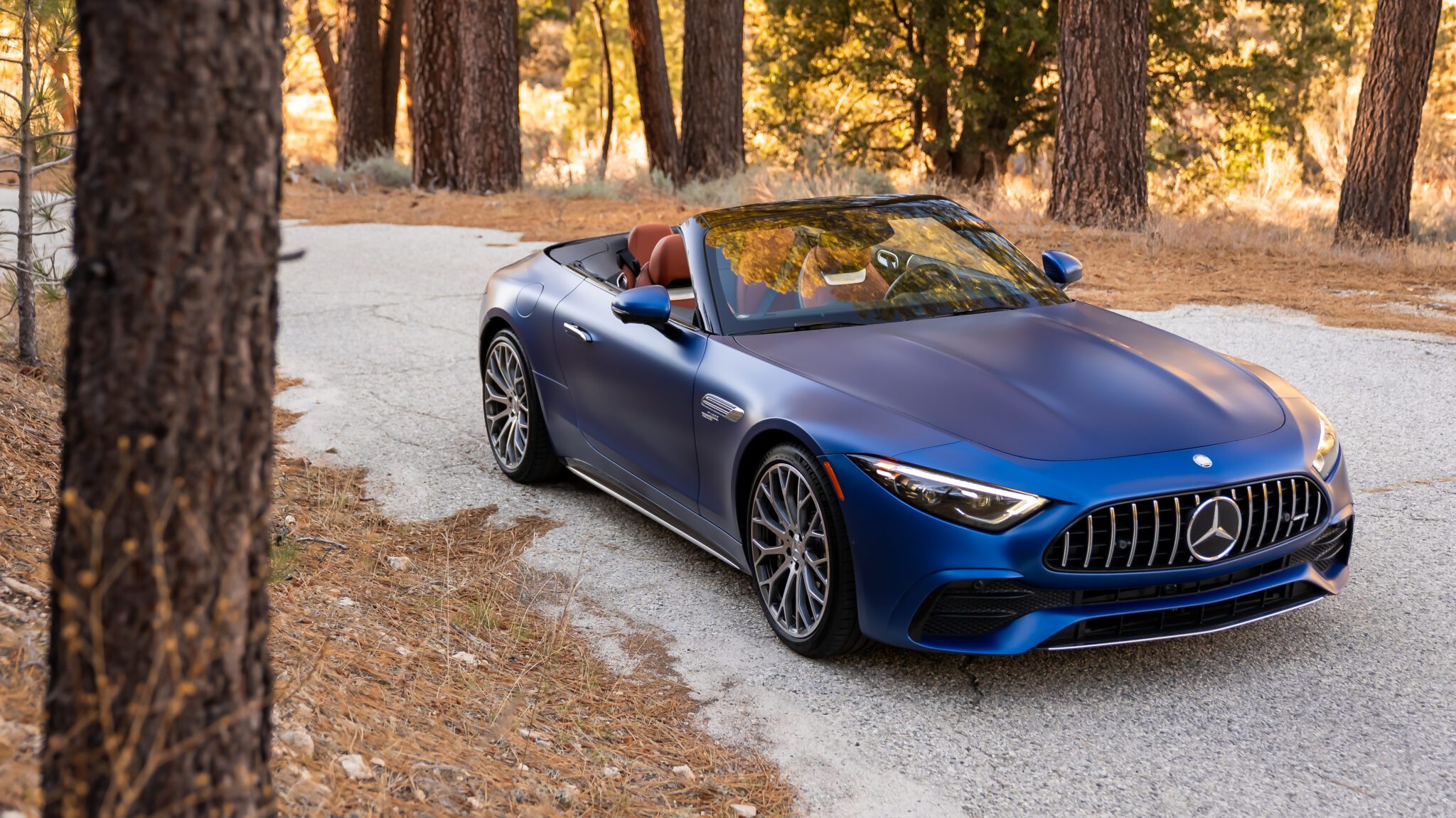
However, as enjoyable as the SL 43 is to drive in anger, it struggles in the areas where you’d expect a big convertible GT to excel. Its turbo-four may wail in Sport+ with its exhaust valves open, delivering plenty of sonorous drama, but it never truly quiets down when you slip back down to the more pedestrian Comfort mode. Its high-strung nature becomes even more apparent when you stop at a set of lights, and it begins to shake the car with a flurry of unwanted vibrations.
Puttering around town, its engine and transmission seem to always be at odds. At times, its throttle response, even in the chillest mode, is like a light switch, making it hard to creep away smoothly. Should you demand a sudden burst of acceleration while cruising, its nine-speed takes a beat too long to find the right gear, like it’s always a step behind the anxious engine up front. As a result, the SL 43 doesn’t have a true dual-personality like the 55 and 63 models. It’s a fantastic car when you’re flying, but it quickly unravels as its speedo drops.
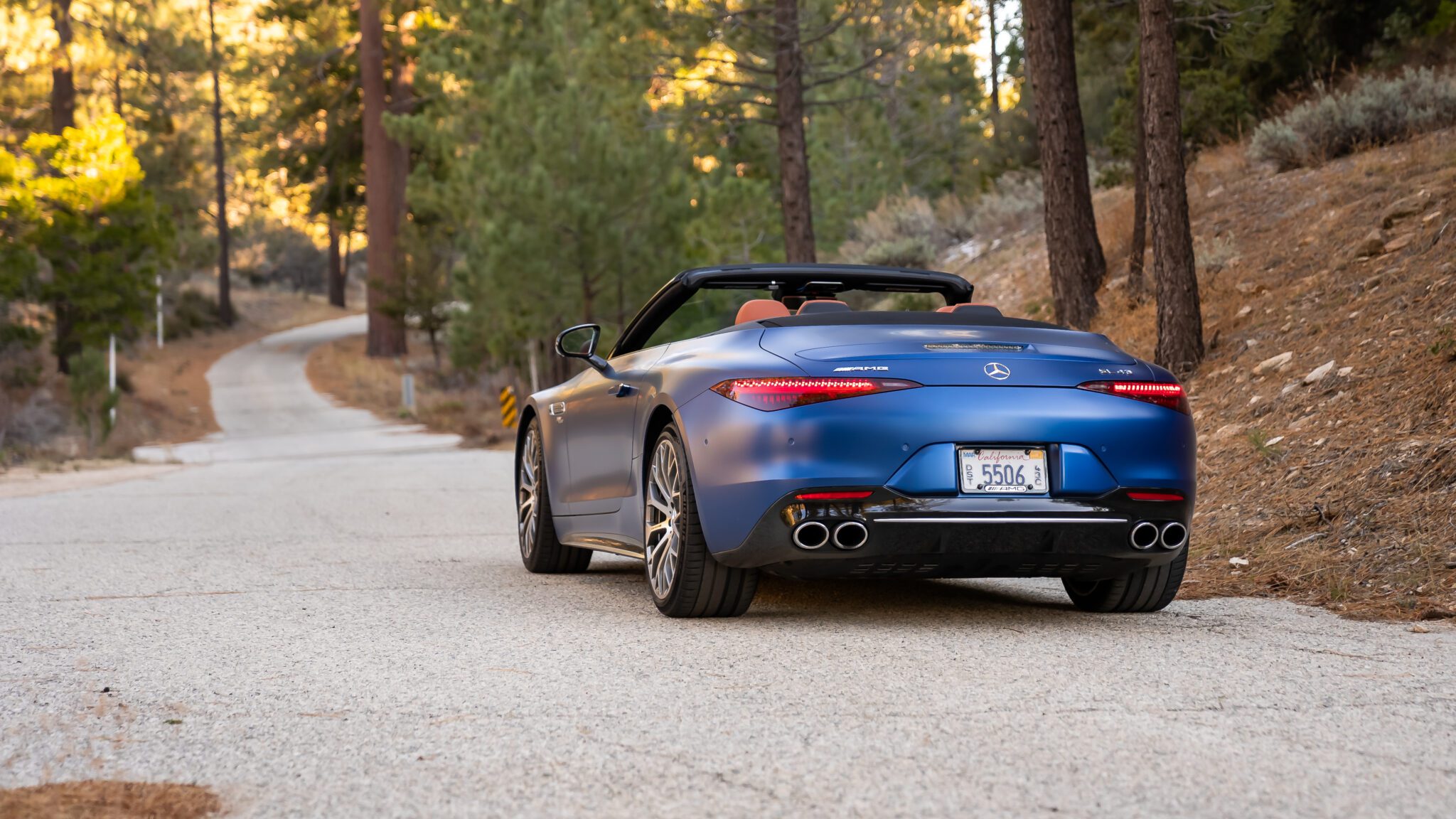
Powertrain calibration issues aside, the rest of the SL 43 is as solid a package as its pricier counterparts. Because most of its cost savings seem to have come from under its hood, its overall aesthetic and cabin layout remain unchanged. It’s still a stunning-looking thing with excellent proportions, which, combined with a larger set of optional wheels, make this fairly large car appear somewhat petite in photographs.
The 43 gets slightly updated bumpers, although you’d have to be a real stickler for details to notice and a set of rounded exhaust tips. Aside from its updated badging, there aren’t many clear visual giveaways that you’ve opted for the least expensive model. This is great for those who appreciate the SL’s good looks but not its previously elevated price tag.

It’s a similar story once you crawl inside, too. Its 12.3-inch digital instrument cluster and vertically oriented 11.9-inch central screen are identical to what you’ll find in the other SLs, as are its seats and retracting soft top. Setting the engine vibrations aside for a moment, this cabin is nicely isolated from wind and road noise, and at higher speeds, with its turbo-four sat at lower revs, it’s decently quiet, too.
The SL 43’s cabin highlights Mercedes’ greatest strength, building world-class interiors. And should you find a nice piece of road, its soft top folds in 15 seconds at speeds up to 37 mph.
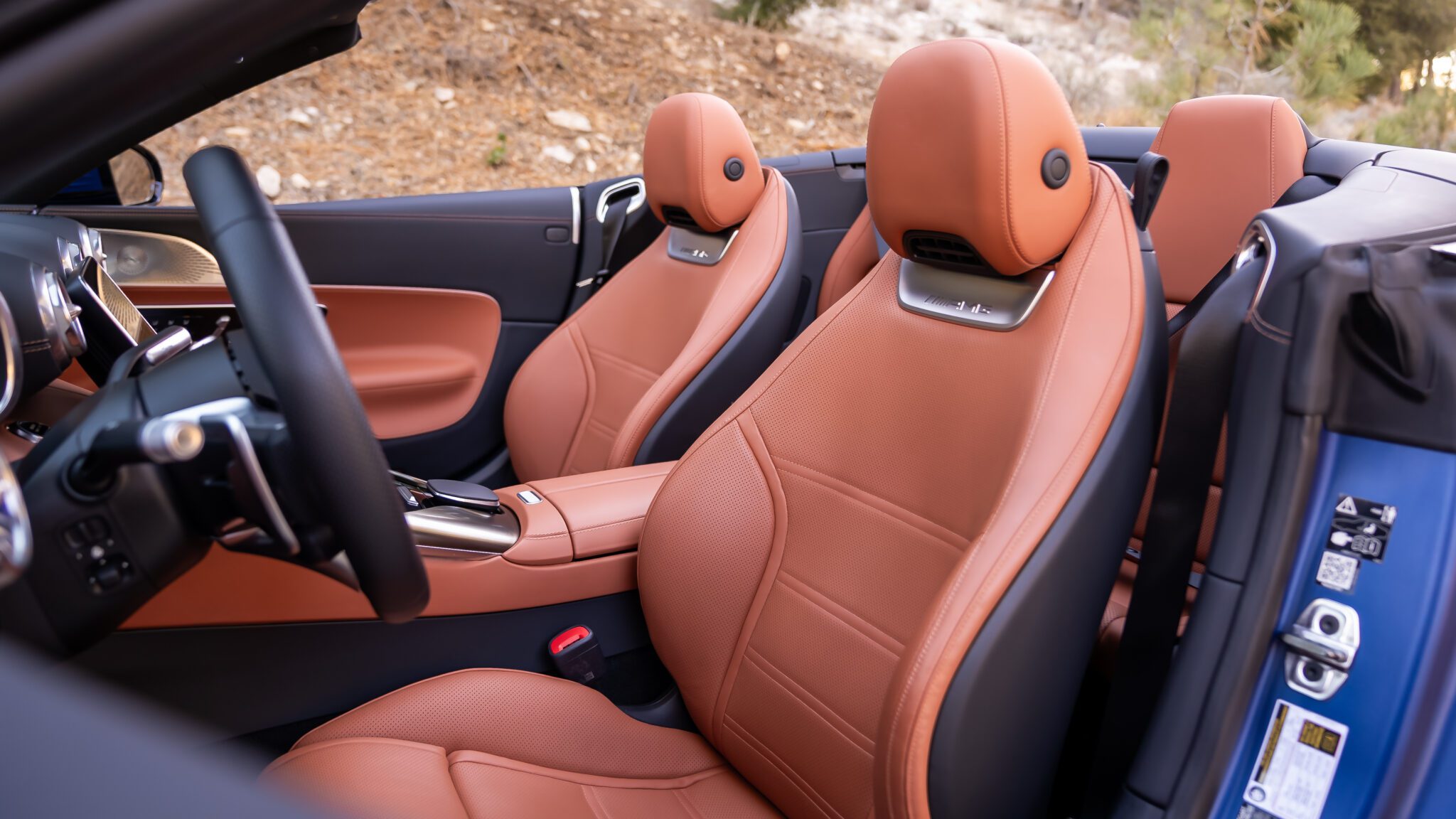
The question anyone considering an SL 43 will ask is: is the price discount worth its trade-offs? The somewhat complicated answer is that it most likely will be. Take my tester’s $119,785 as-tested price as an example. It’s almost exactly $100,000 less than the SL 63 I tested last year, yet the “entry-level” model looks as good, and its cabin is as nice as what you’ll find in its pricier counterpart, with much of the same materials available as options on both. If anything, the 43 opens up the new SL to a whole new price point and, most importantly, a broader market segment.
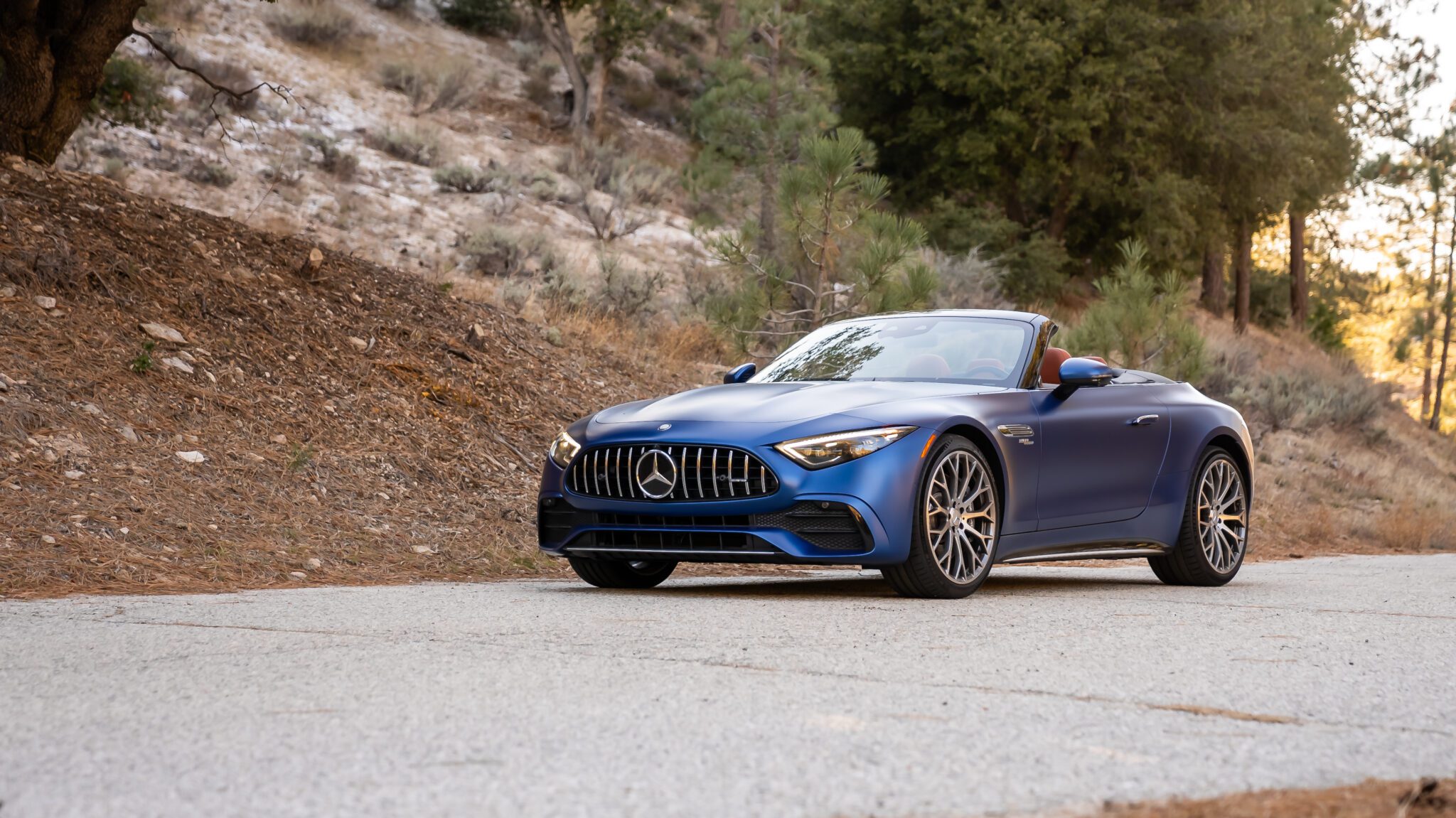
I say it most likely will be because most of the SL 43’s current issues have to do with the calibration of its engine and transmission. They’re the kinds of things Mercedes-AMG can update and refine for future model years. To be clear, I wouldn’t write off this car based solely on its cylinder count. I may prefer the V8-powered SLs overall due to their charismatic sound and greater versatility, but this inline-four has plenty of character and deserves its spot under the SL’s hood, just not in its current state.
If anything, the SL 43 proves that a car with great bones doesn’t necessarily need all the goodies to offer a great driving experience. And once the carmaker addresses powertrain missteps, I believe it can become the right car to complete the lineup.

